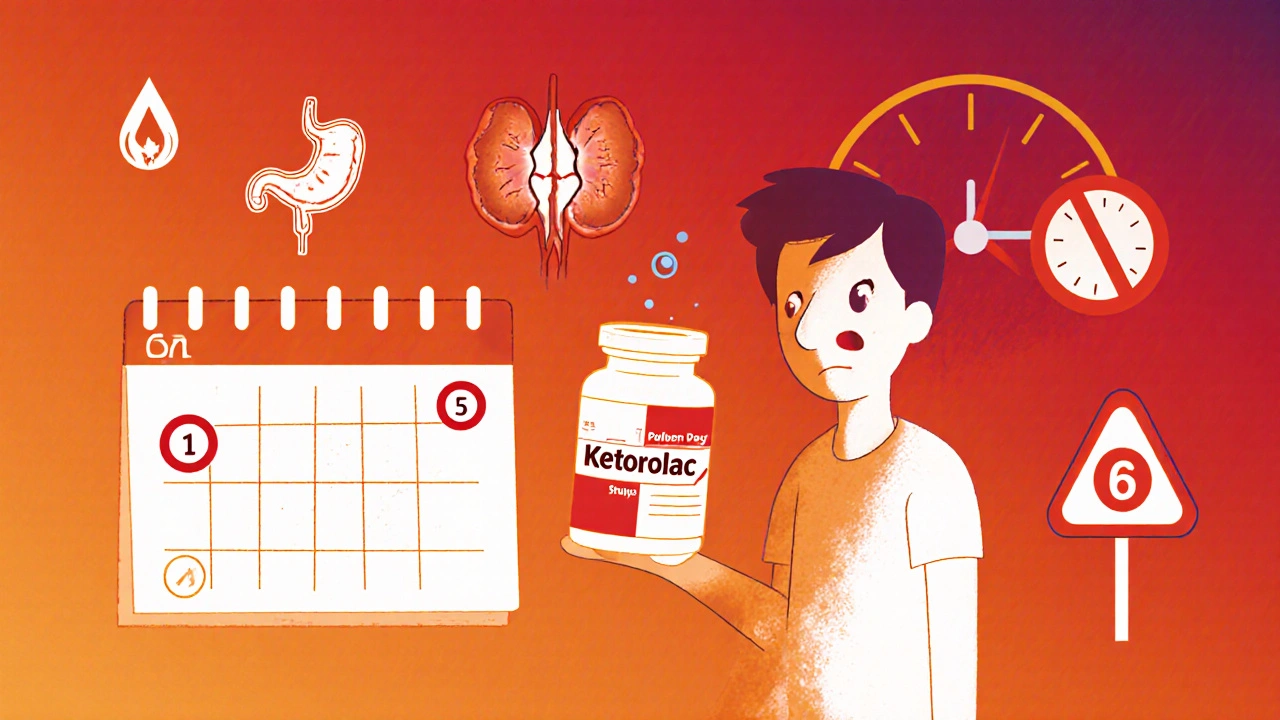Learn how to safely manage ketorolac side effects like stomach bleeding, kidney stress, and drug interactions. Know when to call your doctor and what alternatives work better.
Ketorolac Side Effects: What You Need to Know Before Taking It
When you take ketorolac, a potent nonsteroidal anti-inflammatory drug used for short-term pain relief. Also known as Toradol, it works fast—often stronger than ibuprofen or naproxen—but it’s not meant for everyday use. This isn’t your average painkiller. It’s a powerful NSAID, prescribed only for severe pain like after surgery or injury, and usually for no more than five days. The problem? The longer you take it, the higher your risk of serious side effects.
One of the biggest dangers is gastrointestinal bleeding, a life-threatening risk that can happen without warning. Unlike stomach upset from aspirin, this can cause internal bleeding that leads to hospitalization—or worse. People over 65, those with a history of ulcers, or anyone on blood thinners are at higher risk. Then there’s kidney damage, especially in those with existing kidney issues or dehydration. Ketorolac reduces blood flow to the kidneys, which can crash kidney function fast. And if you’re taking it with other NSAIDs, steroids, or even some blood pressure meds, you’re stacking the odds against yourself.
It’s not just your stomach and kidneys. High blood pressure, fluid retention, and even heart problems can pop up. You might not feel anything wrong until it’s too late. That’s why doctors only hand this out in hospitals or for very short periods. And don’t assume it’s safe just because it’s available by prescription—many people don’t realize how dangerous it can be.
If you’ve been prescribed ketorolac, ask: Why this and not something safer? Is there a way to manage the pain without it? You’re not being difficult—you’re being smart. The posts below cover real cases, patient experiences, and clinical insights on how ketorolac stacks up against other pain meds, who should never touch it, and what to do if you’ve already taken it longer than you should.

